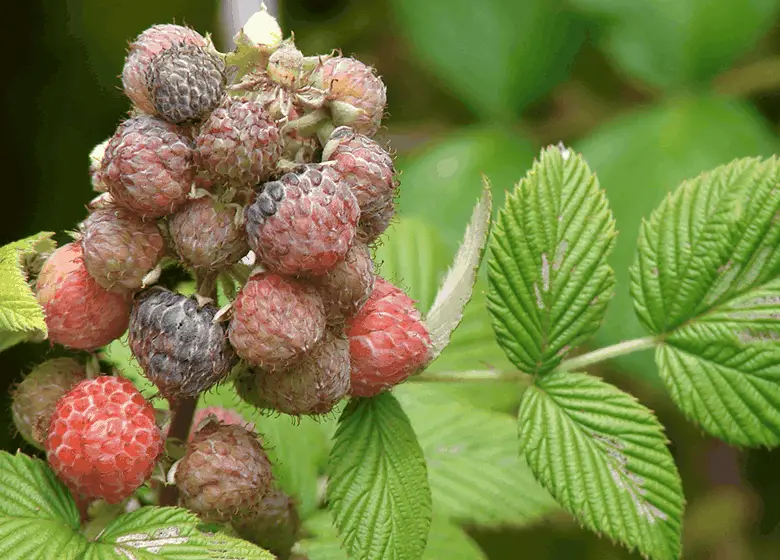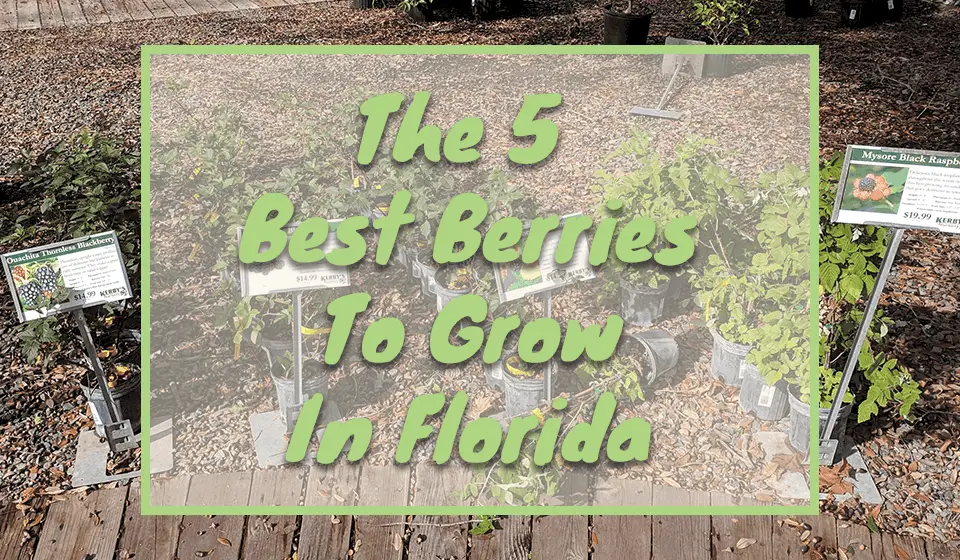It is easy to cultivate blackberries in Florida, but it is a bit tricky when it comes to growing raspberries in Florida.
Raspberries can only do well in some parts of the state, mainly because of climatic conditions. The Mysore raspberry is also the only type of raspberry that will thrive in Florida.
Raspberries have thrived in the wild for centuries and earned the name “nature’s candy.” They have been collected for human consumption for years and are indigenous to Eastern Asia.
Historically, the plant has been appreciated for its sweet berries as well as for its medicinal leaves. It gained prominence in England in the 13th century, after which European settlers to the Americas facilitated its cultivation in the continent.
It thrives in Washington and California but can be grown in Florida as well.
Best Variety of Raspberry For Florida
The Mysore raspberry has adapted well to the acid or limestone soil of Florida. The plant is native to India and Burma, especially the temperate and lower Himalayas. The seedlings were dispatched to some African nations from India, after which they proceeded to Florida.

The plant grows as a large scrambling scrub to heights of between 10 to 15 feet. The plant is extensively set with hooked and sharp horns.
The flowers are either purple or red. Its fruit is rounded-conical, and it is red when unripe and purple-black when ripe. The fruits emit a rich black-raspberry flavor. The clusters can have as many as two dozen or even more fruit.
Do Raspberries grow well in North or South Florida
Raspberries are generally regarded as a Northern crop as they thrive in Northern Florida. The Mysore raspberry seems to like colder weather and a little bit of shade.
They need a particular number of chilling hours’ that is nights in the 40s or even colder to be fruitful.
Best Time to Plant Raspberries in Florida
The best time to sow raspberries is in the Spring, which is also the ideal time to find them. You can, however, plant it during summer if you find healthy plants.
It will establish better if it is planted in the Spring and may even yield few berries in the first summer.
Growing Raspberries
Select the planting area to start. The raspberry plant will need full sun, that is 6 to 8 hours of sunlight.
Expose them to as much sunlight as is possible. Warm sunshine boosts the quality of the fruit so that you get juicier berries.
Avoid establishing it in windy locations since it is susceptible to wind damage.
Cultivate it on the side of a structure or near a fence. The ideal place to grow the plant is on a row along a property line. Raspberries have a sprawling habit and require sturdy support.
Plan for sufficient spacing so that they can receive maximum sunlight. Your soil should be well-drained and free from diseases.
Avoid low-lying locations since water may gather after rainfall. Standing water is a common culprit for root rot, mildew, and mold. You can check your soil’s PH at your local extension office if needed.
Raspberries respond to slightly acidic soil in the ranges between 5.6 to 6.2. PH testing kits can be found at the local nursery.
Planting Raspberries
Raspberries can be grown from seeds or plants. Sow the seeds according to the package instructions.
Use a plastic peat pot filled with soil that is low in nutrients. Begin the sowing process in mid-winter and space the seeds an inch apart. Keep them moist and expose them to partial sunlight in temperatures of at least 60°F.
Transplant the seedling when it starts to develop leaves and when it has reached at least an inch in height.
If you purchase mature raspberry plants, ensure they are at least a year old. They should be certified disease-free. The seedlings and the plants are best planted in early Spring to allow sufficient time for maturation. Consult the weather report for any temperature drop or frost prediction.
Loosen the roots by simply tapping the container with the heel of your wrist. It should be easy to free plants in a root ball from their packaging.
Do not handle the plants roughly to avoid any damage.
The plants should be well spread out by keeping about 6 to 24 inches between rows. The planting holes should accommodate the roots and not touch the lowest leaves. The depth of raspberry holes is about 3 to 4 inches. Mulch will prevent weeds and keep the soil moist. Water the planting area thoroughly after planting.
Caring For Raspberries
Water your raspberry plants weekly. The soil around the plants should be dry in winter and damp during summer.
Raspberries do not like standing water or being overwatered. You can use a soaker hose for an hour or two each week to provide enough water for the plants. Water the plants for more hours if there are dry or heat spells.
Fertilization is ideally done is late winter. Layer several inches of mature compost and also include an organic fertilizer like fish emulsion to boost the health of your raspberry plant.
Pruning
Pruning is necessary to pluck out older canes to remain with fresh canes that will yield fruit. Equip yourself with gloves because raspberries can bite.
When new growth emerges in the Spring, check for any weak or diseased canes and remove them.
Raspberry can grow in an untamed fashion, so you prune any canes that have grown too tall to manage. Do not prune more than a quarter of the cane because you will reduce the amount of fruit that you will harvest.
Wait until spring to start pruning so that you can identify the plants that survived winter. Thinning the plants will improve the harvest, and if you skip on it, you will get a higher yield but of smaller fruit.
Harvesting Raspberries
When it comes to harvesting raspberries, pick the berries in early fall or late summer.
The fruit should easily come off from the plant, and it should have a rich color. Taste a few of the berries to decide if they have enough flavor to be harvested. The sugar level increases as the color darkens.
Harvest berries in the morning when its still cold so that they do not smash as you harvest them. Raspberries are best eaten fresh although you can freeze them for later use.
You Might Also Be Interested In:

